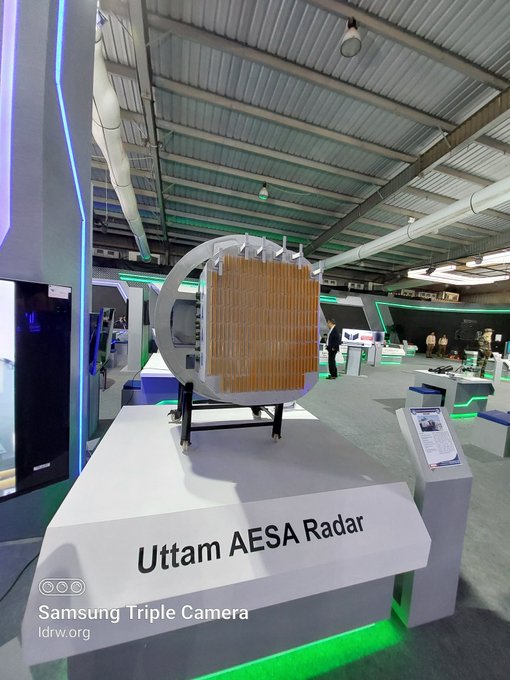SOURCE: AFI


In a significant milestone for India’s indigenous radar development, Bharat Electronics Limited (BEL) officials recently announced that the Defence Research and Development Organisation (DRDO) has finalized the configuration of the Uttam Active Electronically Scanned Array (AESA) radar for integration with the Tejas Mk1A fighter jets, starting from the 51st aircraft. The finalized version of the Uttam AESA radar will feature a substantial increase in transmitter-receiver (TR) modules, rising from the original 720 modules to over 980. This improvement marks a significant leap in radar capabilities for the Tejas fleet and establishes a solid foundation for subsequent Tejas MkII variants.
The upgraded Uttam AESA radar, designed with 980+ TR modules, is expected to deliver enhanced radar range, resolution, and tracking capabilities. TR modules are critical components that determine the radar’s ability to detect and engage multiple targets at extended ranges. By expanding the number of TR modules, the Uttam radar will provide a higher detection range and superior multi-target tracking capabilities, which are essential for modern air combat scenarios.
The increased TR module count will improve the radar’s ability to operate in dense electromagnetic environments and allow the Tejas Mk1A to perform complex mission profiles with a higher level of situational awareness. This capability enhancement aligns with the Indian Air Force’s (IAF) push for advanced avionics in its fighter aircraft, particularly for fourth- and fifth-generation platforms.
With the radar’s final configuration now confirmed, BEL has already begun fabricating the Uttam AESA Fire Control Radar (FCR) for integration onto the Tejas Mk1A platform. This radar variant, designed specifically for the Mk1A, has undergone extensive testing and development to ensure compatibility with the aircraft’s avionics and mission systems. The successful integration of Uttam AESA on the Tejas Mk1A will reduce dependence on imported radar systems and enhance India’s self-reliance in advanced avionics technology.
Starting from the 51st Tejas Mk1A aircraft, the Uttam AESA radar will become standard equipment, bringing significant performance benefits. The radar’s indigenous design also simplifies maintenance and upgrades, as it allows for customization based on operational feedback from the IAF, ultimately extending the radar’s lifespan and ensuring adaptability to evolving mission requirements.
In addition to its deployment on the Tejas Mk1A, a modified version of the Uttam AESA radar is planned for the Tejas MkII, India’s next-generation fighter intended to replace aging aircraft in the IAF’s fleet. The MkII will benefit from the Uttam radar’s advanced features and enhanced TR module count, as the radar will be tailored to meet the requirements of a larger and more capable platform.
This indigenous radar development has far-reaching implications. It not only strengthens India’s position as a technology-driven defense manufacturer but also reduces the need for foreign radars on Indian platforms, promoting the “Make in India” initiative. Additionally, the Uttam AESA radar’s modular architecture makes it adaptable for potential future upgrades and new applications across various platforms, from fighter jets to unmanned aerial systems.